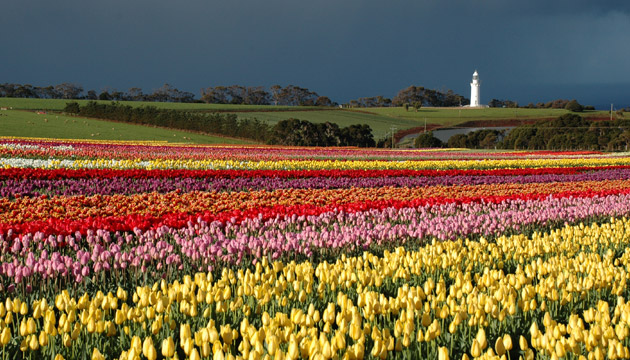A drive between the two capes that form Tasmania’s northern points is a colourful journey of beaches, curious natural features, copious wildlife, fine food and wine, and some of Australia’s most productive agricultural land.
Story + Photos Andrew Bain
You could call it the sleep of the dead. Inside the Gladstone Hotel, in far north-east Tasmania, past two old bullet holes in the floor of the dining room, is a guest room that once served as the town’s morgue. “I don’t tell my house guests that, although I ask nearly everybody who sleeps in that room how they slept,” publican Angela Forsyth says. “They all say it was beautiful, so peaceful and quiet. I don’t say a word.”
In the late 19th century Gladstone was a thriving tin-mining settlement, but today just 110 people live in the isolated town. The hotel is the third to stand on this site, with the previous incarnation burning down in 1923 – the locals were so keen for a beer that they immediately took one of the town’s other closed pubs off its stumps and moved it onto the ashes.
Gladstone may be a shadow of its glory days, but for Angela, who grew up in nearby Bridport and bought the pub in 2003, that keeps life happily simple. “One of my patrons and I sit here quite regularly and try to work out if the population has grown,” she says. “We can run through the houses individually and think who lives in them.”
Gladstone is about as remote as towns get in Tasmania, sitting alone near the state’s sparse north-eastern tip, at Cape Portland, and it’s here that a great journey begins across Tasmania’s north coast, following the length of Bass Strait.
Though no single road follows the coast’s length, the Bass Highway and minor roads combine to keep the shore in easy reach. It’s a drive of roughly 400 kilometres between the two capes that form Tasmania’s northern points and is best spread across at least three days.
This story excerpt is from Issue #119
Outback Magazine: June/July 2018









